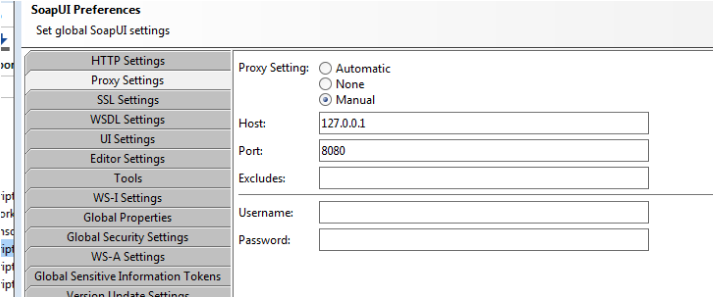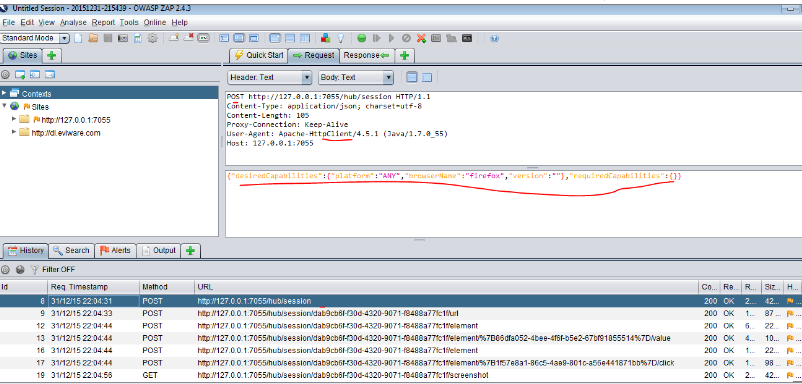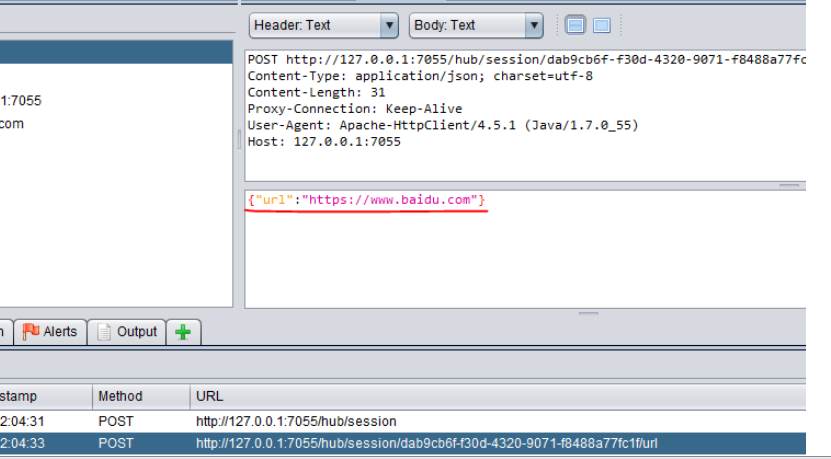Selenium Webdriver重新使用已打开的浏览器实例
条评论本文转自:http://blog.csdn.net/wwwqjpcom/article/details/51232302
本文中的样例均使用SoapUI ,关于SoapUI+Webdriver 的配置,请看上一篇:
http://blog.csdn.net/wwwqjpcom/article/details/51174664
我弄这个的本意是为了在SoapUI中更好地编写自动化用例,因为我的业务流程有的很长,有7-8个页面。
我想把代码不集中在一个Groovy 脚本里,想在第二个脚本中继续使用第一个脚本中打开的浏览器。这样便于
维护和定位问题。
也还有一种情况是我打开了浏览器,,操作了系统到某一个界面后,我写了这个页面的测试脚本,使用已
打开的浏览器我立刻就可以单独对这个页面进行测试,测试我写的代码是否OK 。不通过就人工操作复位页面,
修改代码后再次测试,不用每次测试代码是否可行都从头打卡浏览器,登录系统,重新操作了。可以实现分步
单页面调试自动化脚本。
首先,来简单看一下Selenium Webdriver如何工作的。
(1)Selenium代码调用API实际上根据 The WebDriver Wire Protocol 发送不同的Http Request 到 WebdriverServer。
IE 是 IEDriverServer.exe
Chrome是ChromerDriver,下载地址: https://sites.google.com/a/chromium.org/chromedriver/downloads
Firefox是以插件的形式,直接在selenium-server-standalone-XXX.jar里了:
webdriver.xpi (selenium-server-standalone-2.48.2.jar中/org/openqa/selenium/firefox/目录下)
new FirefoxDriver()时,启动Firefox浏览器时,带此插件一起启动,然后插件会默认监听7055端口,7055被占用就使用下一个端口。如下图所示。
同一台机器上可以同时启动多个FirefoxDriver实例,每个实例占用不同的端口号。
1 | The WebDriver Wire Protocol 协议的具体内容请看:https://code.google.com/p/selenium/wiki/JsonWireProtocol#Introduction。 这个协议现在正在被W3C标准化,W3C Webdriver,两者基本一样。 |
(2)WebdriverServer接收到Http Request之后,根据不同的命令在操作系统层面去触发浏览器的”native事件“,
模拟操作浏览器。WebdriverServer将操作结果Http Response返回给代码调用的客户端。
为了更清晰直观地看到这个是如何运转的,我们来在使用OWASP ZAP做代理,截获Http Request和Response来看一下。
首先安装OWASP ZAP或其他有代理功能的工具,设置SoapUI Proxy,如ZAP默认使用8080端口,则SoapUI配置如下:
配置完SoapUI端口后,好像需要重启SoapUI,然后在SoapUI 的自动化测试代码中,代理才能正常工作。
重新跑前一节FirefoxDriver的代码,查看截获的请求和响应。如下图所示:

可以清楚地看到代码与DriverServer之间是如何根据WebDriver协议连通的。
WebDriver协议是RESTful风格的。
回到我们的主题:Webdriver重新使用已打开的浏览器实例。
Webdriver实例都将重新打开一个浏览器,新建一个Session。Selenium并没有接口或方法可以使用已有Session。
如果在一个测试用例中不将浏览器退出关闭,想要在另一个新的测试用例中使用已打开的浏览器的话,怎么办?
Selenium Webdriver本省并没有这种接口。本人自己实现了一个基于FirefoxDriver的,因为我基本只用Firefox,
IE 什么的,没需求,没动力啊,但是大概原理应该类似,差不多。
FirefoxDriver是主要是由startClient()和startSession()完成初始化。startClient()中打开浏览器,设置执行器HttpCommandExecutor。
StartSession执行New Session指令,获取SessionID,并根据响应,设置capabilities。
具体有兴趣的可以自己下载源代码,自己看。
根据上文,Webdriver 想要执行命令,需要1:WebdriverServer的地址 2:一个可用的SessionID 。
写一个自己的WebDriver类来new一个Webdriver。
因此需要在一个用例中保存WebdriverServer的地址和SessionID ,最后不退出关闭浏览器。
另一个用例中使用保存的参数,完成Webdriver的实例化。
代码就不贴在文章里了:源代码及jar包下载地址:
http://download.csdn.net/detail/wwwqjpcom/9500777
其中的初始化代码如下(需要两个参数 Webdriver 的地址和SessionID):
1 | public myFirefoxDriver(String localserver,String sessionID){ |
代码例子:
测试用例1中打开浏览器,但是不退出关闭浏览器:
1 | import org.openqa.selenium.By |
测试用例2中继续使用1中已打开的浏览器:
1 | import webtest.myFirefoxDriver; |

注意代码中的文字注释下方部分,1中要将WebdriverServer的地址和SessionID 保存起来,
2中使用1中保存的参数,用实现的自己的myFirefoxDriver来初始化driver。
(此处感谢https://learnsoapui.wordpress.com/ , 我最初研究在SoapUI中使用Selenium
Webdriver看了这个,虽然感觉他讲的也是不明不白的 ,但是给了我启发)。
1 | 注:(1)webtest01.jar是我在Selenium 2.48.2版本的代码下编译的,本人只配合用过Selenium 2.48.2 |
1 | <script type="text/javascript"> |